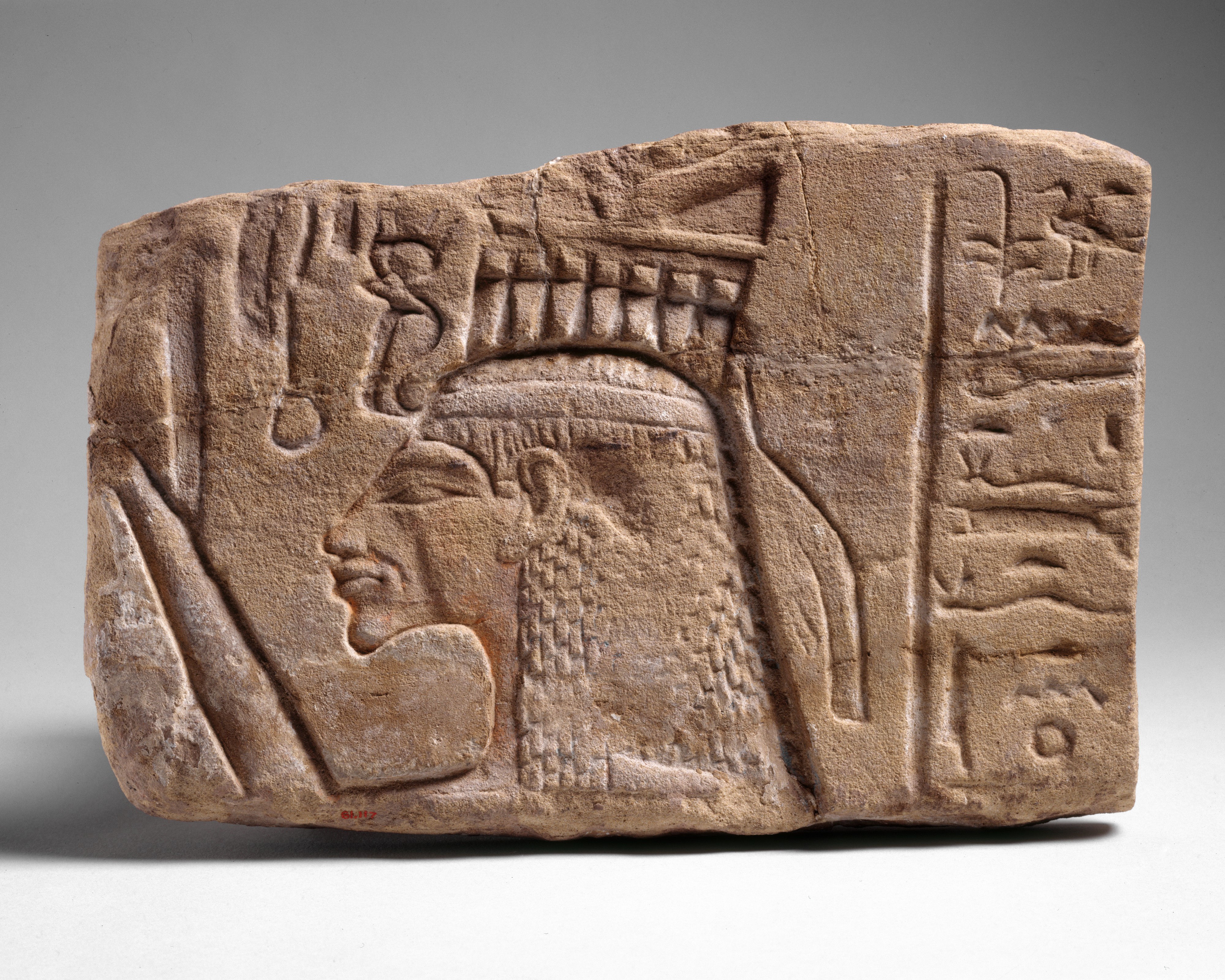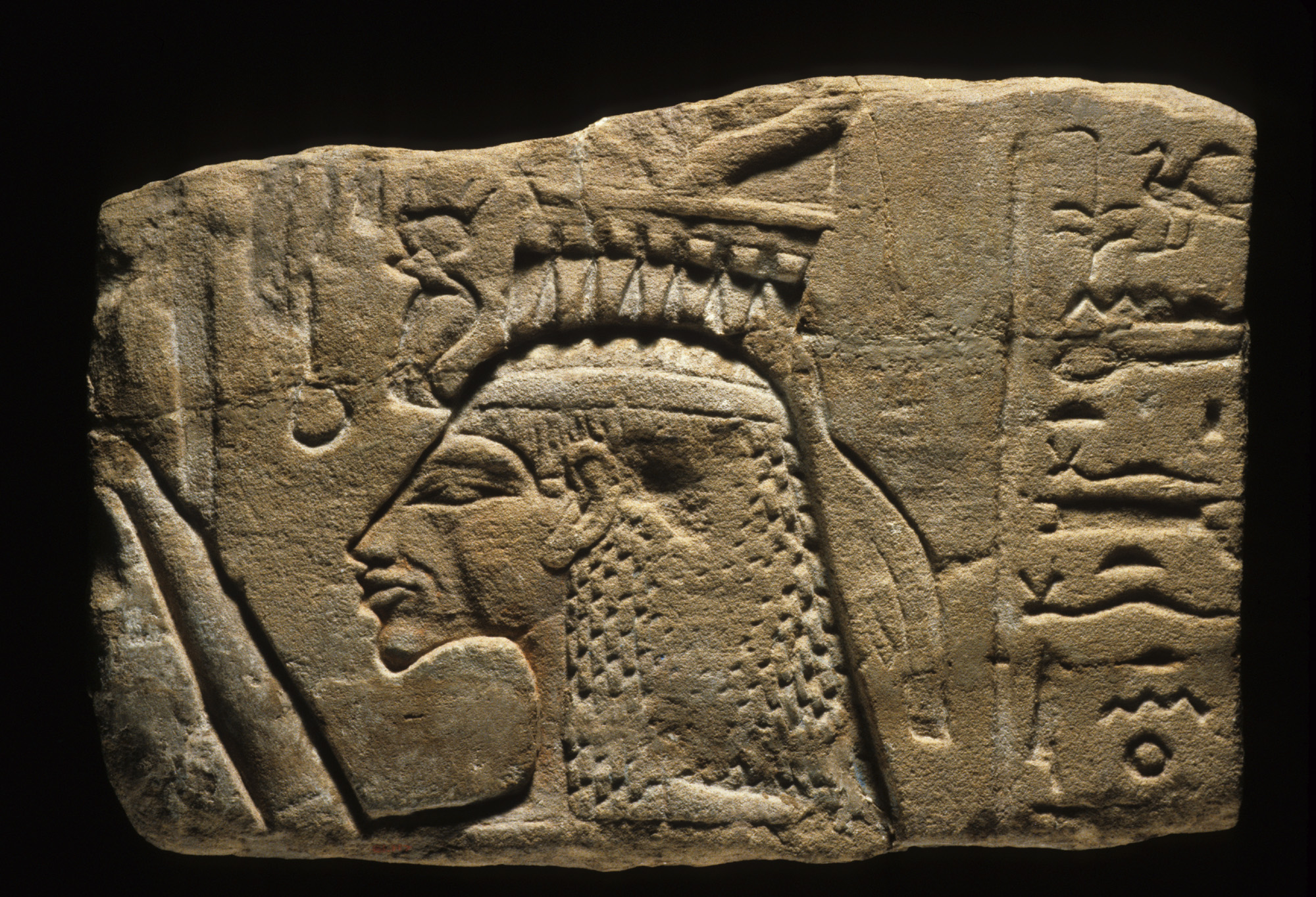You must join the virtual exhibition queue when you arrive. If capacity has been reached for the day, the queue will close early.
Learn more
Jump to content tickets Member | Make a donation
- The Collection
- The American Wing Ancient Near Eastern Art Arms and Armor The Michael C. Rockefeller Wing Asian Art The Cloisters The Costume Institute Drawings and Prints Egyptian Art European Paintings European Sculpture and Decorative Arts Greek and Roman Art Islamic Art Robert Lehman Collection The Libraries Medieval Art Musical Instruments Photographs Antonio Ratti Textile Center Modern and Contemporary Art
Crop your artwork:
Scan your QR code:
Gratefully built with ACNLPatternTool
New Kingdom, Amarna Period
On view at The Met Fifth Avenue in Gallery 122
Nefertiti, whose name means "the Beautiful One Is Here," was principal queen of Akhenaton. Like her mother-in-law Queen Tiye, Nefertiti was a powerful figure in the court. She is frequently shown participating in religious rituals on an equal footing with her husband, and she already played an unprecedented role in the decoration of the Aten structures that Amenhotep IV built at Karnak, from which this block almost certainly came, before his move to Tell el-Amarna.
This relief block shows the queen wearing an elaborate wig surmounted by what was originally a towering crown of uraei, sun disk, two cow horns, and two feathers. Her arm is raised in offering to the Aten. The queen's image is depicted, with a drooping chin, thin slanted eyes, and a sharply angled nose and brow similar to that is seen in depictions of her husband in an exaggerated style seen in some earlier of Amarna art (see 66.99.40).
As Marianne Eaton-Krauss, a specialist in Amarna art, has recently pointed out, the traces of the Aten rays around the queen'fs face and arms indicate the disk was almost directly overhead. The queen must have stood alone, without her husband, beneath the rays. She would have been followed by a small figure of her eldest daughter, labeled in the column of hieroglyphs behind her head. The unusual arrangement is known from the pylons of the early Temple of the Benben at Karnak, and from some enigmatic structures known as the Pillars of Nefertiti. The relief may well have originated in one of these structures.
Open Access
As part of the Met's Open Access policy, you can freely copy, modify and distribute this image, even for commercial purposes.
API
Public domain data for this object can also be accessed using the Met's Open Access API.
- Download image


This artwork is meant to be viewed from right to left. Scroll left to view more.
Artwork Details
Use your arrow keys to navigate the tabs below, and your tab key to choose an item
Title: Relief of Queen Nefertiti
Period: New Kingdom, Amarna Period
Dynasty: Dynasty 18
Reign: reign of Akhenaten
Date: ca. 1353–1336 BC
Geography: From Egypt; Probably from Upper Egypt, Thebes, Karnak
Medium: Sandstone
Dimensions: H. 22 cm (8 11/16 in.); W. 32 cm (12 5/8 in.)
Credit Line: Rogers Fund, 1961
Accession Number: 61.117
Learn more about this artwork
Timeline of Art History
Chronology
Egypt, 2000-1000 B.C.
Museum Publications
The Royal Women of Amarna: Images of Beauty from Ancient Egypt
Related Artworks
- All Related Artworks
- In the same gallery
- Egyptian Art
- Reliefs
- Sandstone
- Sculpture
- From Africa
- From Egypt
- From 2000–1000 B.C.
Block from a Relief Depicting a Battle
ca. 1427–1400 B.C.
Seated Statue of King Senwosret I
ca. 1961–1917 B.C.
Attendants in a Procession
ca. 1353–1336 B.C.
Akhenaten Sacrificing a Duck
ca. 1353–1336 B.C.
Relief with the Head of Amenhotep I
ca 1525–1504 B.C.
Resources for Research
The Met's Libraries and Research Centers provide unparalleled resources for research and welcome an international community of students and scholars.
The Met Collection API is where all makers, creators, researchers, and dreamers can connect to the most up-to-date data and public domain images for The Met collection. Open Access data and public domain images are available for unrestricted commercial and noncommercial use without permission or fee.
Feedback
We continue to research and examine historical and cultural context for objects in The Met collection. If you have comments or questions about this object record, please complete and submit this form. The Museum looks forward to receiving your comments.
Egyptian Art at The Met
The Met's collection of ancient Egyptian art consists of approximately 26,000 objects of artistic, historical, and cultural importance, dating from the Paleolithic to the Roman period.

